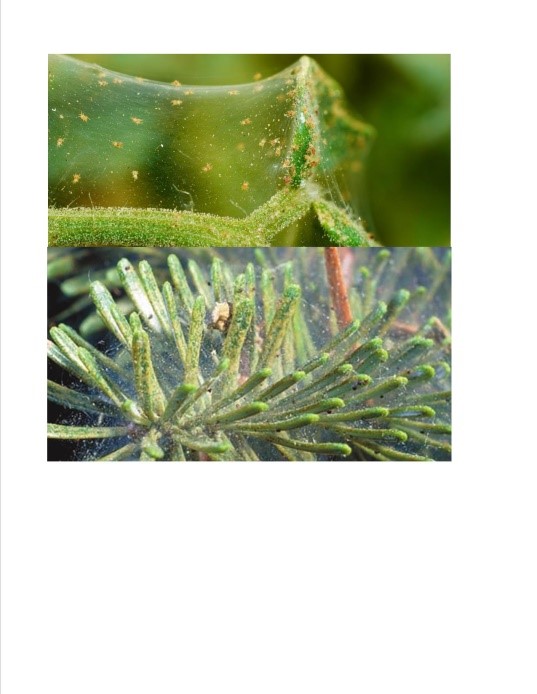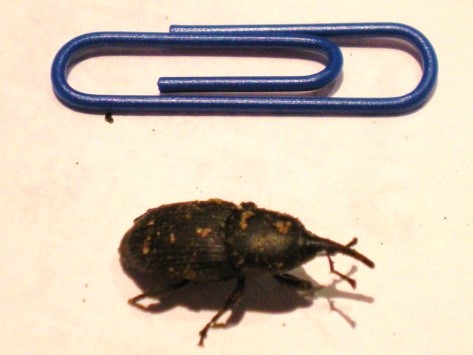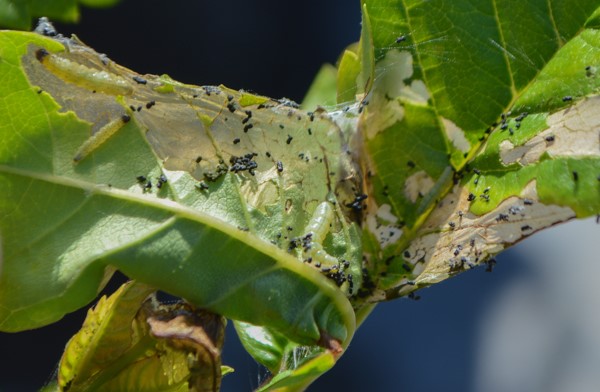Click here for the PDF
Lurking Critters
Have you ever strolled by plants and noticed something’s been munching on the leaves? Or maybe there’s a mysterious brown spot in a tree that seemed to develop overnight? Sometimes plant pests come and go in a matter of days, but their damage may linger for months after they’ve moved to a new green ‘residence’. Fortunately, our dry desert conditions don’t make for an overly welcoming environment for arthropod ‘friends’ to reside. However, during mild times of the year, a few critters may be lurking in our landscape. Here are a few to watch out for in the coming months:
The Agave Weevil begins feeding on desert succulents in the spring, but damage may not be seen until late summer. The insect doesn’t kill the plant, but transmits a bacteria, causing a wilt and the collapse of the plant. The best way to ward off this snouted pest is to make sure plants are planted correctly (not too deep, with good drainage) and watered the appropriate amounts. Discuss springtime insecticidal treatment options with your pest management professional, which can help reduce weevils feeding on the plant that year.
Spider mites love our dry dusty conditions and are commonly found April-May, and again in September-October. Like many insects, they pierce and suck the plant juices, leaving behind brown foliage. Spider mites love cypress, rosemary and sages. Test a plant by shaking a limb on a white piece of paper and look very closely for these microscopic arachnids. Hosing off dusty foliage before the sun comes up can help keep populations in check during their ‘busy’ season. If extensive damage is seen, miticide applications can be applied by a licensed pesticide applicator to prevent further plant damage.
The Sesame Leafroller (or leaf tier) surfaces a few times a year, damaging tender new growth on Tecoma species and bougainvillea. Small green caterpillars create a protected space by tying or rolling the leaf, then munching away on it. No damage on a Tuesday? They may invade on a Wednesday, enjoy the fine dining, and disappear on Thursday. Insecticidal treatments can be made but often times they are gone before spraying can be scheduled. Damage is minor most of the time, and with the growth rate of their favorite food source, these plants usually grow out within a few weeks.
If you discover any of these or other critters in your landscape, discuss with your landscape or pest management professional if treatment is an option. Remember that in Arizona, insecticides including organic or even soapy water must be applied by a licensed applicator (unless you live and reside on the property and spray them yourself). Please use all pesticides responsibly, and always follow the label closely. The label is the law.


